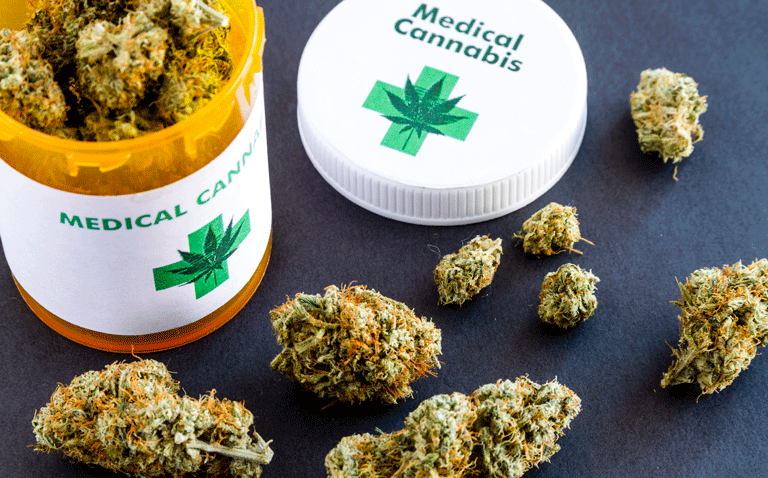Medical marijuana has been found to be associated with a reduced use of opiates among patients with breast, colorectal and lung cancer
Widespread state medical marijuana legalisation in the US is associated with a lower rate of opioid dispensing and pain-related hospital events among some adults receiving treatment for newly diagnosed cancer according to an analysis by US researchers.
Pain is an extremely common cancer symptom with a 2022 meta-analysis of 12 studies (10 with breast cancer and 2 lung cancer) patients, finding a pooled pain prevalence rate of 40%. Although paracetamol and non-steroidal anti-inflammatory drugs are universally accepted as part of the treatment of cancer pain at any stage of the WHO analgesic ladder, strong opioids are the mainstay of analgesic therapy in treating moderate to severe cancer-related pain. Nevertheless, with tightened regulations leading to a decrease in opioid prescribing across the United States, evidence points to a decline in opioid use among end-of-life care in those with cancer although there has been a rise in pain-related emergency department visits, suggesting that end of life cancer pain management may be worsening. Although medical marijuana has been studied and found to be efficacious for relief of pain in patients with advanced cancer pain not fully relieved by strong opioids, a 2016 review suggested that while marijuana may have the potential for refractory cancer pain, much of the data are based on animal data, small trials, or are outdated.
With the potential to help patients with cancer pain, in the current study, US researchers set out to assess the associations between medical marijuana legalisation and opioid-related and pain-related outcomes for adult patients receiving cancer treatment. The team used data from national commercial claims between 2012 to 2017. The researchers assessed several measures including the proportion of patients having 1 or more days of opioids and 1 or more pain-related emergency department visits or hospital events, during the 6 months after a new cancer diagnosis.
Medical marijuana and opiate use
A total of 38,189 patients with newly diagnosed breast cancer, 12,816 with colorectal cancer (55.4% male) and 7,190 (51.1% female) with lung cancer were included in the analysis.
Medical marijuana legalisation was associated with a reduction in the rate of 1 or more opioid days from 90.1% to 84.4% (difference = 5.6, 95% CI 2.2 – 9.0, p = 0.01) among breast cancer patients. For colorectal cancer patients, there was also a reduction, this time from 89.4% to 84.4% (difference = 4.9, 95% CI 0.5 – 9.4, p = 0.03). Finally, opioid use reduced from 31.5% to 22.1% (difference = 9.4, 95% CI 0.8 – 17.9, p = 0.03) among patients with lung cancer with recent opioids.
Medical marijuana legalisation was also associated with a reduction in the rate of 1 or more pain-related hospital events from 19.3% to 13.0% (difference = 6.3, 95% CI 0.70 – 12.0, p = 0.03) among patients with lung cancer with recent opioids. However, the difference for the other two forms of cancer was not significant.
The authors concluded that medical marijuana legalisation was associated with a lower rate of opioid dispensing and pain-related hospital events among some adults receiving treatment for newly diagnosed cancer.
Citation
Bao Y et al. Medical Marijuana Legalization and Opioid- and Pain-Related Outcomes Among Patients Newly Diagnosed With Cancer Receiving Anticancer Treatment. JAMA Oncol 2022










